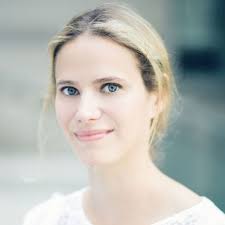Eric Kwon
Science & Technology Editor
On Tuesday, Oct. 26, the UC Santa Barbara (UCSB) Library hosted the first Pacific Views Series event of the academic year — the first one after a COVID-19-induced hiatus. The Pacific Views Series aims to create a space for faculty and graduate students across disciplines to talk about their current work, whether that be through research, publications, or creative work.
The event, titled “The Scientific Body of Knowledge – Whose Body Does it Serve?” introduces Emily G. Jacobs, associate professor of psychological & brain sciences, whose research involves women’s brain health. The talk is also co-sponsored by The Feminist Futures Initiative, an organization committed to research and dialogue that aims to shape a just future. Jacobs’ goal for the talk focuses on, “the intersection between gender equity in the sciences and the status of women’s health” through her study focus in neuroscience.
She starts by describing the complex nature of brains, focusing on how important it is to understand our minds, especially with prevalent brain conditions. She points to the homogeneity of science starting from the early 1900s, when the scientific field was largely represented by white men, thereby excluding women and ethnic minorities that would have been valuable contributors to new innovations.
Though gender equality has improved, Jacobs mentions the concerningly small number of women and minorities in higher education (four out of five faculty members at Harvard University are men), which brings up the question: Who gets to be a scientist?
Jacobs talks about how girls, from the very beginning, are trained to see women as less intelligent than men. There are studies that show these biases (which are not innate) appear as early as age six. This is just one of the drivers that lead to underrepresentation.
She presents an example in which researchers sent fake resumes out to science professors across the country, with male and female applicants. Though the resumes were identical for the most part, the sole distinguishing factor being names (either masculine or feminine), the male applicants were seen as more competent, hireable, and deserving of mentoring.
Not to mention, there were disparities in pay; the women’s starting salary, lower than the men’s, forever shapes the trajectory of lives, since raises and the like are determined by starting salaries. For starting salaries, female applicants were offered $4,000 less.
Even when a female faculty member does get hired, says Jacobs, “she’s paid less, she’s given a smaller startup budget, and she’s equipped with less lab space than male colleagues with similar academic achievements.” Jacobs encourages the University of California (UC) system to make every employee salary public and to push universities to use the data in order to create more equity in resources and policies.
She turns to other statistics like how half of all female scientists leave full-time science after having their first child. Furthermore, 80 percent of tenured neuroscience professors are male, and only five percent are women of color. These women are not able to work their way up either. Jacobs explains that “we’ve tried that, it’s not working.” The COVID-19 pandemic, Jacobs notes, also disproportionately burdens women.
She thinks about the problem of keeping equity in science, while being able to include women and people of color. Jacobs notes, “Advocating for diversity in science isn’t just a matter of social justice. It’s not just the right thing to do. Diversity in science makes science better.” Diversity allows creativity, different perspectives, and ideas to come into fruition.
She points to the overwhelming sex bias in animal studies and the overreliance of male models. This can have devastating consequences: 80 percent of pharmaceutical drugs that are pulled are for women, and the animal testing done beforehand is not even done on female animals.
Though women make up the majority of the population, men are seen as the norm. Jacobs points to the long history of neglect to women’s bodies, and the perceived unpredictability of women’s bodies due to hormonal changes. A major event that becomes neglected as a result is menopause, reflecting insufficient education — 80 percent of medical schools fail to include menopause in their curriculum. Jacobs poses, “What are the other questions we can’t see because we lack the experience to even imagine them?”
She then goes on to highlight some of her projects and research, her education as an endocrinologist leading her to look at how hormones influence the brain, which in turn are intrinsically tied to the sex organs. In closing, she believes that an increase of women in positions of power will create more equity, as they will have the experience to make these decisions for other women.











